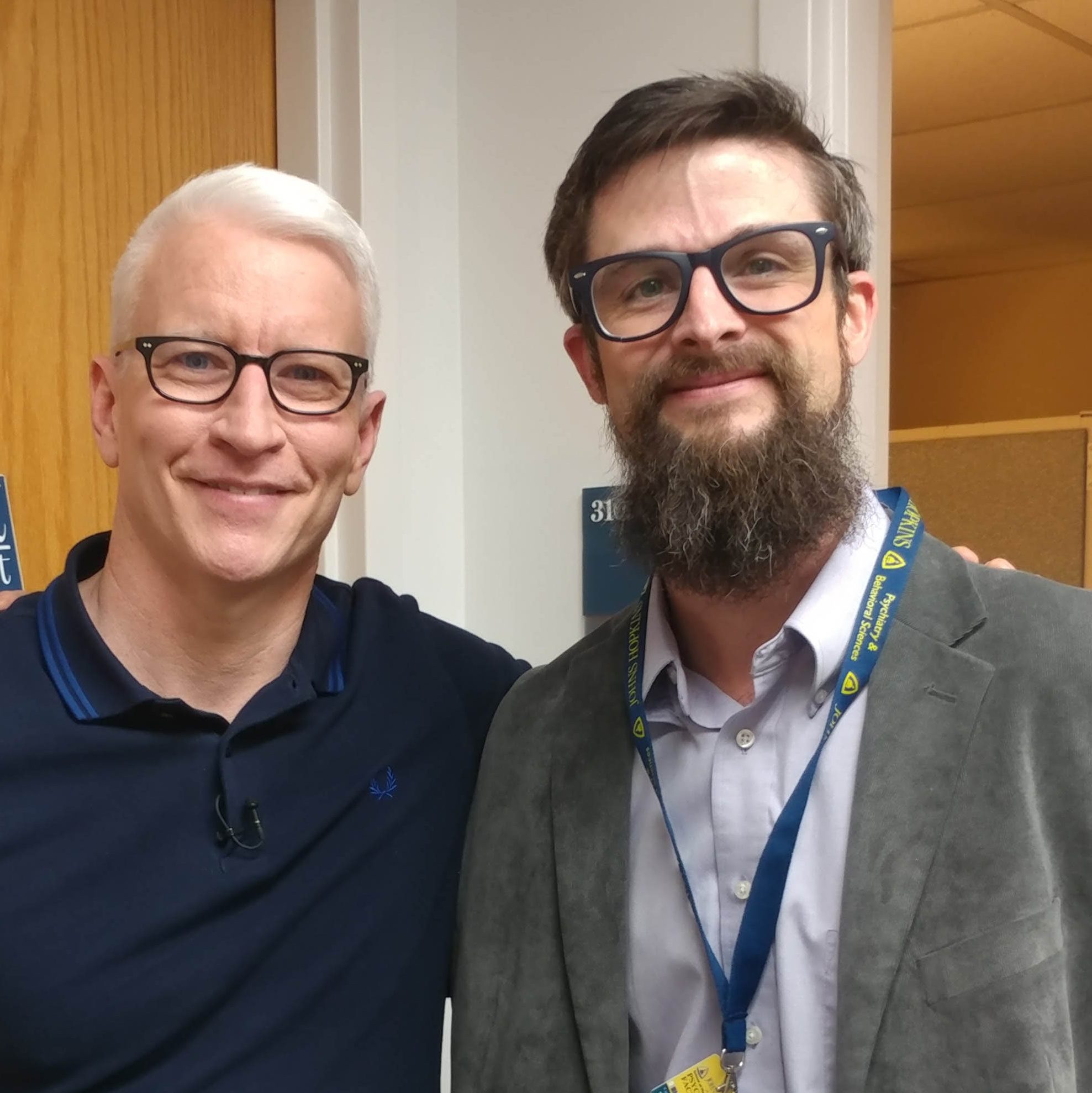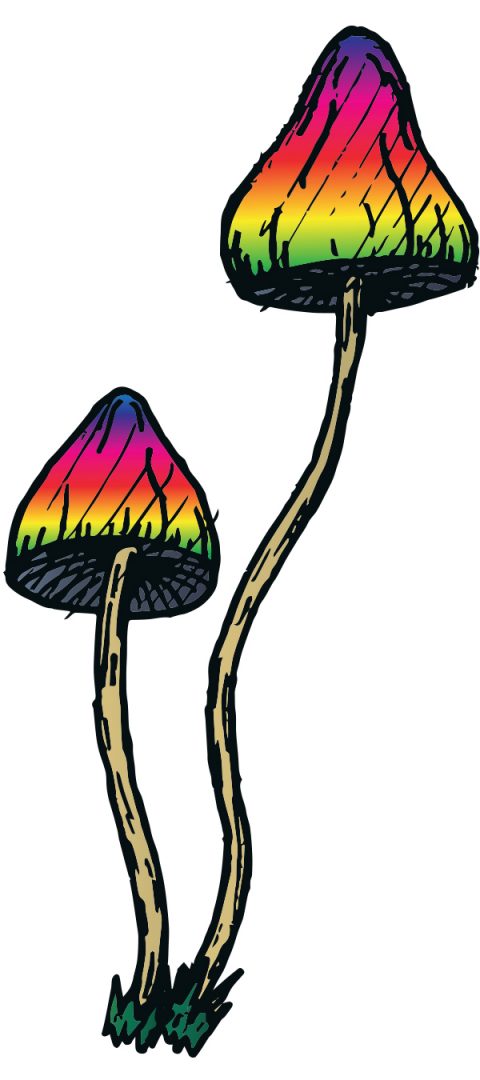Psychedelic potential

An emerging approach to psychiatric care could mean receiving just a few treatments rather than taking a daily pill.
Matthew W. Johnson, ’98, is at the forefront of research that could eventually bring psychedelic drugs into the field of psychiatry.
“There’s a potential for this to really be a paradigm shift within psychiatry,” Johnson said. “It’s a fundamentally different model of psychiatric drug because it’s only administered one or a few times, but people learn from the experience and have lasting effects rather than just treating symptoms every day.”
Psychedelic drugs like psilocybin, found naturally in some mushrooms, seem to prompt a mental flexibility and psychological processes that can result in lasting change. Research in this field has developed in the last couple of decades, and recent findings have begun to fuel wider interest.
Although Johnson works at Johns Hopkins University in Baltimore, he followed the passage of Oregon Measure 109 closely. Voters approved the measure in November, which legalizes the therapeutic use of psilocybin. It also created a two-year period during which regulatory details will be worked out.
“We could start to see clinics popping up and I want to play a role in ensuring this happens safely,” he said.
Johnson grew up near big East Coast cities, and transferred to EOU as a non-traditional student. As a psychology major, Johnson discovered a passion that has developed into a meaningful career.
“Working in the psych department was really incredible to me,” he said. “I valued the environment because I wasn’t in classes with 600 other students. I got involved with research and took on responsibilities as a research assistant in a laboratory.”
He developed an interest in the effects of drugs, from cocaine to caffeine.
“There are good, bad and ugly effects,” he said. “These things were fascinating to me how they could have such profound effects on peoples’ lives.”
Studies with psychedelics
When he arrived at Johns Hopkins in 2004 for post-doctoral work, Johnson continued studying a broad range of therapeutic and psychoactive drugs, including one that administered high doses of psilocybin.

“People report having a highly valuable introspective experience that leads them to re-evaluate or change their habits,” Johnson said. “This is drastically different from a daily drug to relieve symptoms.”
He conducted another study that administered psychedelics to cancer patients experiencing depression and anxiety fueled by their diagnosis and treatment. Six months after receiving psilocybin, they reported a lasting reduction in depression and anxiety.
Participants go through several days of medical and psychological screenings for risk factors like schizophrenia and heart problems. Professional guides build a rapport with them and talk through the potential for a “bad trip” or anxiety reaction. Johnson has served as a guide for more than 100 psilocybin sessions.
“With psychedelics we can give a high dose that’s medically safe, but psychologically really intense,” Johnson said. “You’re just telling them to pay attention to the experience and not to try to control it. The perceptual changes can be interesting, but they gain more meaningful experience by focusing inward.”
Two guides watch over patients for eight hours while they lay on a couch with eye shades and headphones playing music. When it’s over, participants go home and write a description of their experience, then come in the next day to debrief.
Beating a bad reputation
Small studies with LSD took place in the early 1960s, and found that LSD roughly doubled the odds of reducing alcohol use. Johnson followed up on this anti-addiction work by using psilocybin to help people quit smoking. His team is currently seeing a one-year success rate of 59% with the psychedelic drug, compared to just 27% success on the nicotine patch.
Psychedelics were actively researched from 1950s through ’70s, Johnson said, and the findings were seen as breakthroughs at first, but then LSD started getting abused and it developed a bad reputation.
“It took the passage of decades before research began again, and even then it was controversial because of that history,” Johnson said.
Now, with 20 years of modern results—and safety guidelines Johnson authored in 2008—grants and research centers are emerging again. Two years ago, Johns Hopkins received $17 million to fund its Center for Psychedelic and Consciousness Research, the first full-fledged academic center for psychedelic research in the U.S. Similar institutes are forming in California, New York and elsewhere.
After Johnson’s research showed an “extremely large” reduction in depression, two companies are moving forward with FDA trials that could approve it for treatment within the next few years.
“I think we’re seeing a sea change in the degree to which new groups are now starting this research,” Johnson said.
In informal discussions with organizers for Oregon Measure 109, Johnson focused on the details. Since the law would allow for both medical and therapeutic use, what would the regulations look like? How would this be integrated with the state’s role in overseeing medical practice?
“We need appropriate oversight and screening to address the known risks and maximize potential benefit,” he said. “There’s still a lot to be figured out.”
Psychedelics FAQ with Dr. Johnson
Q: What are shrooms or magic mushrooms?
A: Magic mushrooms or shrooms refer to one of over 200 species of mushrooms, mostly in the genus Psilocybe, that contain psilocybin and psilocin, the main psychedelic compounds in these mushrooms. These classic psychedelics have effects similar to LSD and mescaline.
Q: How does a psychedelic drug affect the brain?
A: Classic psychedelics exert their primary effects by activating a subtype of serotonin receptor in the brain, called serotonin 2A. They initiate a cascade of effects within the neuron, which has downstream effects on other neurotransmitters, and ultimately cause profound changes in the way brain areas synchronize or communicate with each other. There is still far more to figure out!
Q: How could doctors use psilocybin for medical treatment?
A: It would have to wait until after the FDA has approved psilocybin for use in medicine outside of research use. If approved, a procedure would include patient screening, preparation, supervision of the psychedelic administration, and follow-up care. It would look more like outpatient surgery than typical psychiatric drugs that are sent home with people.
Q: What risks are associated with psychedelic drugs, and how are those risks addressed in a medical/research setting?
A: The possibility of a “bad trip” is always present, especially if the dose is high enough. This could mean anxiety, fear, confusion, or severe psychological distress. Reassurance and a calm presence typically help. In a clinical setting, professionals monitor the entire session and never leave the participant alone.
Medical and psychiatric screening identifies people with heightened risk, such as those who have schizophrenia or severe heart disease.
